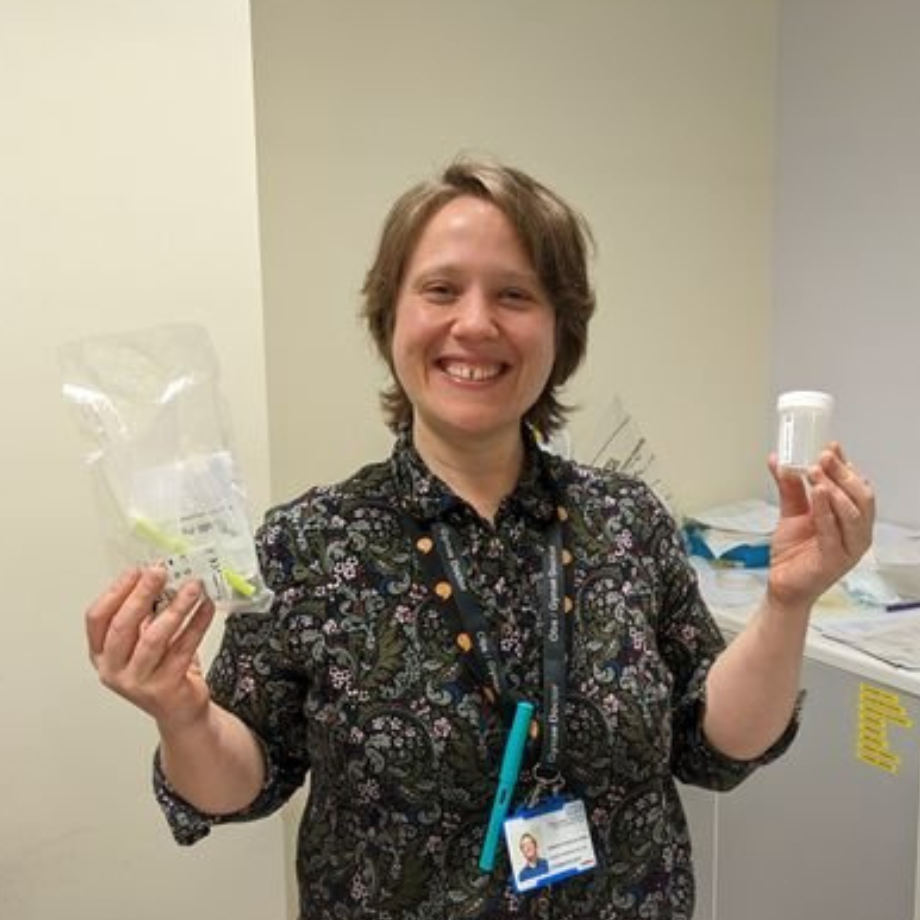#PrideInResearch at the MCRC – HPV screening for all
99% of cervical cancer cases are caused by the human papillomavirus (HPV), a common sexually transmitted virus. Current screening consists of a speculum examination which entails a sweep of the cervix to collect cells and test them for HPV. However, with 3,200 cases of cervical cancer in the UK every year, screening uptake is at an all-time low of 72 per cent and is on a decreasing trend.
Individuals who identify as LGBTQIA+ and have a cervix, see lower cervical screening attendance, with 17.8 per cent of lesbian and bisexual individuals never attending screening (compared to 7 per cent in the general female population), with the number even higher still in the transgender community. Thus, this community, amongst others, are subject to health inequalities, meaning interventions are required to reduce these screening barriers.
In her interview with Manchester Cancer Research Centre (MCRC), Dr Jen Davies-Oliveira, a Trainee in Obstetrics and Gynaecology, talks about her research into the prevention and early detection of cervical cancer. This research is centred on the possibility of developing an at home urine test that can detect HPV and therefore offer an alternative to current cervical screening.
ACES – LGBTQIA+ study
The ACES Team at The University of Manchester are currently investigating the accuracy of a urine sample as opposed to the ‘smear’ test for HPV detection. In addition, the ACES LGBTQIA+ study seeks to understand the LQBTQIA+ community’s thoughts on current cervical screening methods including barriers and assessing the acceptability of self-screening in the future. This study has been supported with funding from the Manchester Academic Health Science Centre (MAHSC).
There are currently no studies to date that have explored the acceptability of a urine self-test for cervical screening within the LGBTQIA+ community. Such a test has the potential to increase the number of individuals being screened and thus narrow the health inequality gap, such as that seen in the LGBTQIA+ community.

Dr Jen Davies-Oliveira

Addressing Health Inequalities – Alternative CErvical Screening (ACES): Exploring opinions among the LGBTQIA+ community
Read the case study
Q&A
What led you to this research around addressing health inequalities such as those experienced in the LGBTQIA+ community?
My research has sought to understand and find ways to increase the number of those attending cervical screening. Addressing health inequalities is vitally important as we know that those from certain communities and backgrounds are less likely to attend cervical screening and therefore are at an increased risk of developing cervical cancer.
Addressing the health inequalities of cervical screening in the LGBTQIA+ community was personally important, and alongside my ACES team colleagues (including Emma Thorpe, Rachel Hawkins, Lee Malcomson and Emma Crosbie), we secured a MAHSC funding bid to enable this research. Most important were the opinions and encouragement of our user involvement group who co-created this project with us and believed that it was an important research question to ask.
What are some of the barriers to cervical screening experienced by the LGBTQIA+ community?
Barriers to screening are mainly associated with access and the screening method itself. Difficulty in making a convenient appointment and the embarrassment and possible discomfort of the speculum examination are the main ones across all the screening population as a whole. Specific to the LGBTQIA+ community are gendered waiting areas, worry about being judged about gender and sexuality, misgendering, not feeling at risk of the disease, the examination evoking feelings of gender dysphoria and in the case of transgender individuals, not receiving invitation letters for screening in the first place.
What effects do these barriers have on screening uptake in this community and what is the importance of overcoming these barriers?
These barriers have real life consequences on the health and wellbeing of the LGBTQIA+ community as they reduce the number of individuals that attend screening. Not attending screening increases the possibility of developing cervical cancer and all the consequences that go along with this. If everyone was screened regularly this disease could be picked up and treated early enough to stop the possible progression to cervical cancer.
Overcoming these barriers is the most important task we can address to increase the number of those being screened and reduce the risk of developing cervical cancer.
What does the success of this research look like to you?
Success within this research means to find the LGBTQIA+ community’s voice around cervical screening and understand how to increase the number of those screened and reduce the disproportionately high burden of cervical cancer within this community. This work will help shape a more inclusive future cervical screening programme.